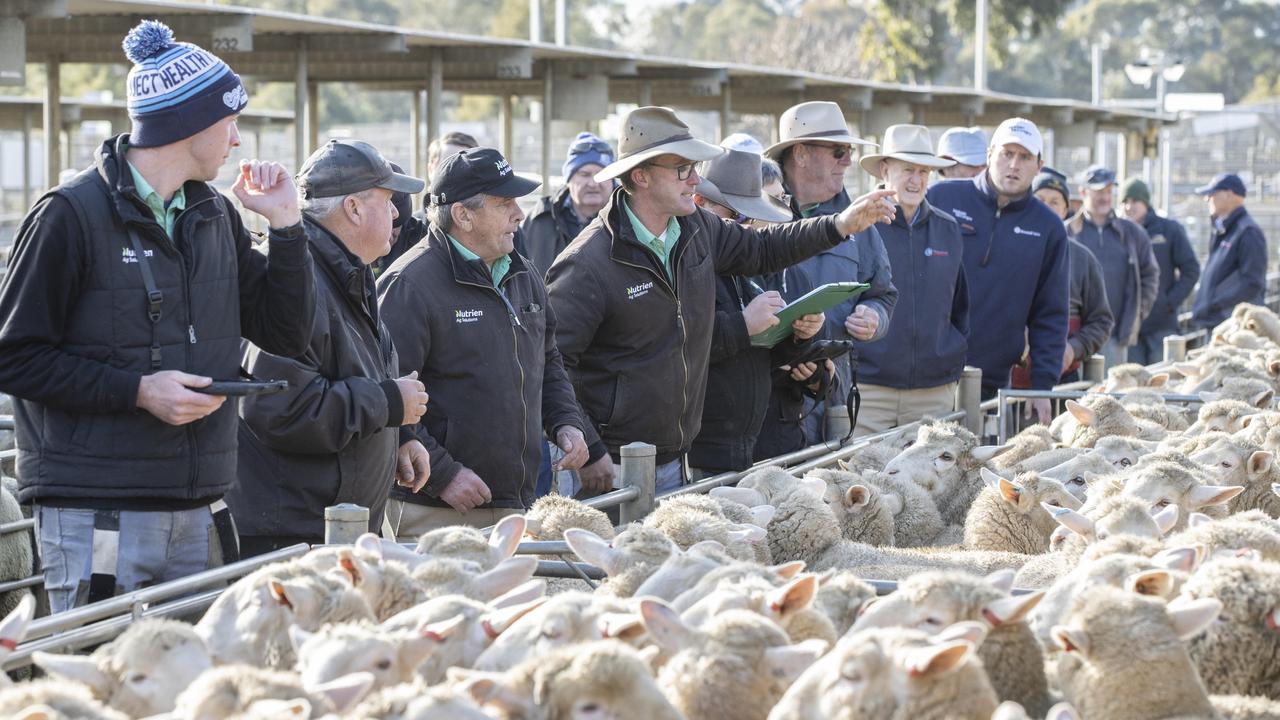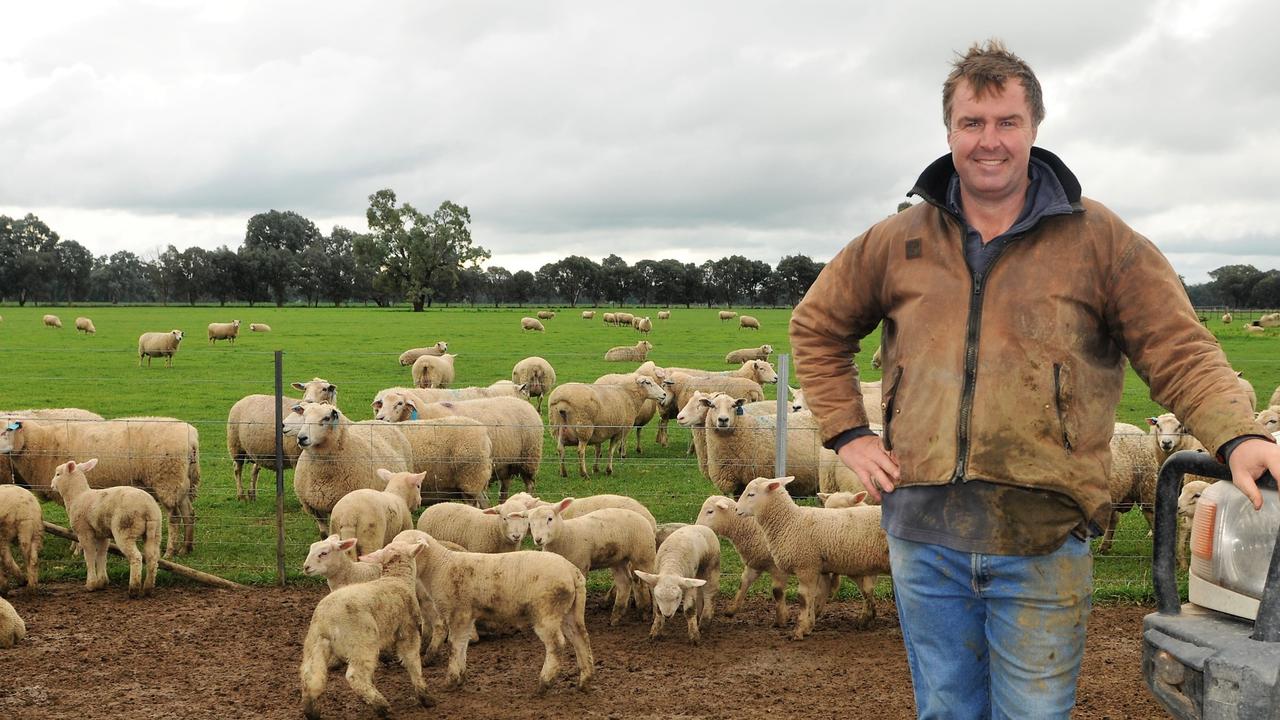Why more cattle is tipped to hit Victorian markets
Victorian cattle offerings were up 10 per cent in prime sales in the past week, but even more is expected in the coming weeks. See the latest.
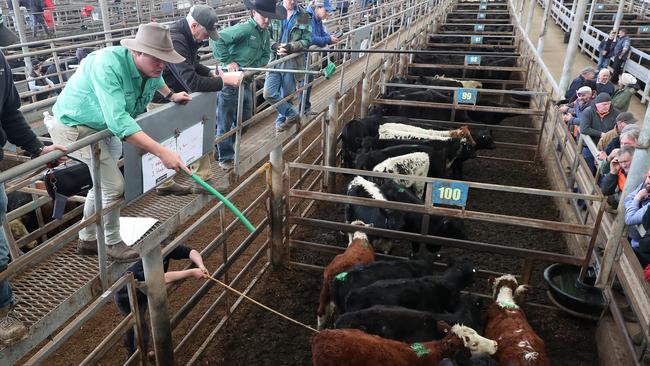
Livestock prices are showing surprising resilience as the season in many key production areas across southeast Australia hangs in the balance, prompting a flood of numbers on to the market.
The benchmark Eastern Young Cattle Indictor closed on Monday at 665c/kg, 122c higher than a year ago while other beef indicators have gained 8-38c/kg liveweight in the past month.
The news is not so promising for the lamb and sheep industry, with Victorian rates dropping up to 154c/kg carcass weight from where they were four weeks ago. But they are still above levels from 12 months ago, giving some comfort to those forced to destock earlier than usual due to the tight season.
Weekend rain eased pressure in some areas such as the Western District, but much of Victoria’s North East and the NSW Riverina missed out, putting extra pressure on selling decisions.
Numbers are already swelling some southern markets, with National Livestock Reporting Service Figures showing Victorian cattle offerings were up 10 per cent in prime sales in the past week, with the biggest increase in restocking steers and heifers.
The influx is also hitting store sales, where last week more than 10,000 store cattle were sold over two days at Wangaratta and Mortlake as producers looked to offload numbers.
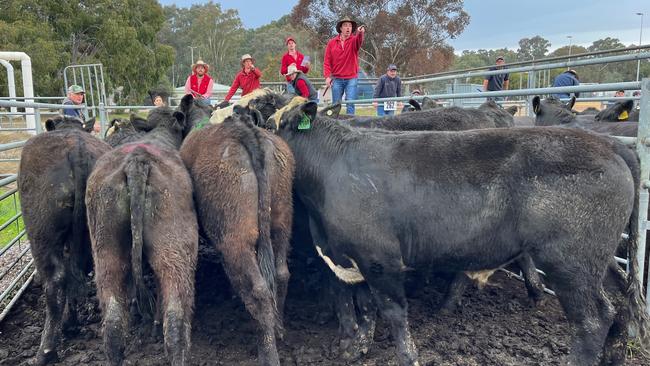
Wangaratta’s market was 40 per cent bigger than initially expected with 4900 weaner and feeder cattle penned, while Mortlake’s offering of 5593 was more than double penned at the same time last year.
StoneX Australian livestock and commodities manager Ripley Atkinson said weather would play a big role in stock flow into sales.
“Within the next two to three weeks I think we’ll begin to see bigger numbers of cattle start to move,” Mr Atkinson said.
“A snap of hot weather could see a rush, but I envisage there’ll be a general rise in supply as spring lengthens.”
Mr Atkinson said rain in northern Australia could be masking the turn-off from southern areas in national yarding statistics.
“Rainfall on large areas, particularly solid falls in central Queensland and areas down into NSW saw numbers tighten up, with some accessibility issues pushing cattle back,” he said.
Corcoran Parker director Justin Keane said the extent of the tough season meant cattle were up to 100kg lighter than they would normally be at Wangaratta’s feature store sale last week.
The yarding at that centre was originally pinned at 3500, but swelled to 4900 by sale day as more producers looked to lighten numbers.
Those brave enough to put cattle forward were rewarded though, as rates reached up to 500c/kg liveweight in a vote of confidence in the industry.
“The buyers are seeing the genetic merit of the cattle – they are the same size (as last year) but with not as much weight,” Mr Keane said.
“The feeling is that you have to go with the grass, not after it has grown, and that is spurring buyers.”
Much of that buying support came from feedlots, as well as from northern NSW and Gippsland, where seasonal conditions are more favourable.
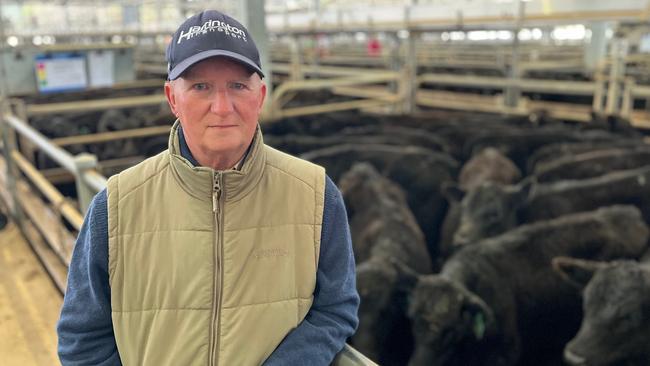
Rob Ferguson from Bowmans Forest sold 140 Angus steer weaners at Wangaratta, and was surprised when they made more than last year despite being much lighter. Last year, his top cattle weighed 363kg and returned $1160, compared to 270kg types fetching $1310 this year.
“Lighter cattle this year making more per head than heavier cattle last year is a really good result and not one I was expecting,” Mr Ferguson said.
Meanwhile sheep and lamb prices are in a two-speed economy, with the best stock earning a premium while those forced by the season to sell lighter and unfinished lines copping a discount.
One pen of very light crossbred ewes made just $1 at Horsham last week or just 8c/kg carcass weight, according to the National Livestock Reporting Service’s Graham Pymer, but this was the exception rather than the rule with Merinos averaging 350c/kg and crossbreds 290c/kg carcass weight.
Bendigo’s market was bigger on Monday, but again the price trend was to reward the top lines and discount those which were underdone.
And while the poorer quality lambs were up to $15 cheaper, the lowest price for lambs reported by the NLRS was $26.
FP Nevins Bendigo director Chris Nevins said the lamb market was holding up despite the bigger numbers.
“We had sucker lambs make $235 and old lambs sell up to $250 so there’s nothing wrong with that,” Mr Nevins said.
“Where prices are getting a touch up is where they are under done and say someone who had too many sheep on, well they are getting discounted.”
In its analysis of the sheep market, Rural Bank expects lamb prices to stay strong for the next month “before encountering some downward pressure from rising supply as spring unfolds”.
“Fortunately, prices are set to enter spring in a strong position,” the authors said.
“Prices have eased since then but currently remain 7.8 per cent above the five-year average.”



